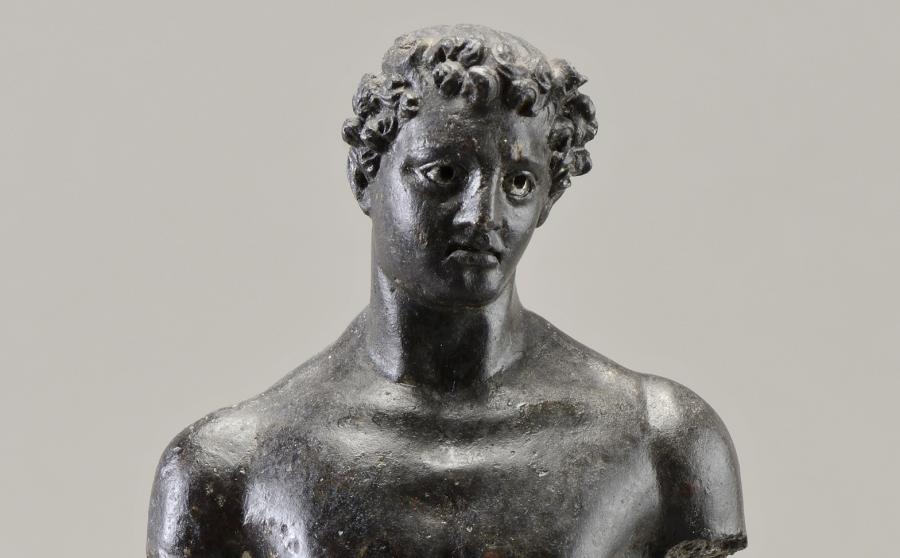Mercury
Information sur l’artiste
Roman Gaul (?)

Mercure, Ier siècle ap. J.-C.
Image © Lyon MBA - Photo Alain Basset
The high quality of this statue of Mercury clearly distinguishes it from serial productions. Here, the artist was inspired by classic Greek sculpture, in particular the great sculptor Lysippus.
Powerfully muscled, the nude body is represented as motionless. However, strength and energy radiate from the apparent ease of the pose. The man is in an unstable equilibrium, pushing on his right foot with his left leg behind. To compensate for this imbalance, the torso is slightly angled toward the rear. The position leads to an inverse twisting of the shoulders, which creates a dynamic movement. Every muscle quivers under the tension of a body ready for action. The head follows the movement, and silver-incrusted eyes animate the virile face.
Only the point of attachment of broken-off wings in the curls of hair enable us to identify the statue today as being that of Mercury. The missing arms probably held a purse or a caduceus, the traditional attributes of a god who was worshipped particularly in Roman Gaul.
Roman Gaul (?)
1st century A.D.
Bronze H. 23; W. 78; D. 42 cm
Lambert bequest in 1850





